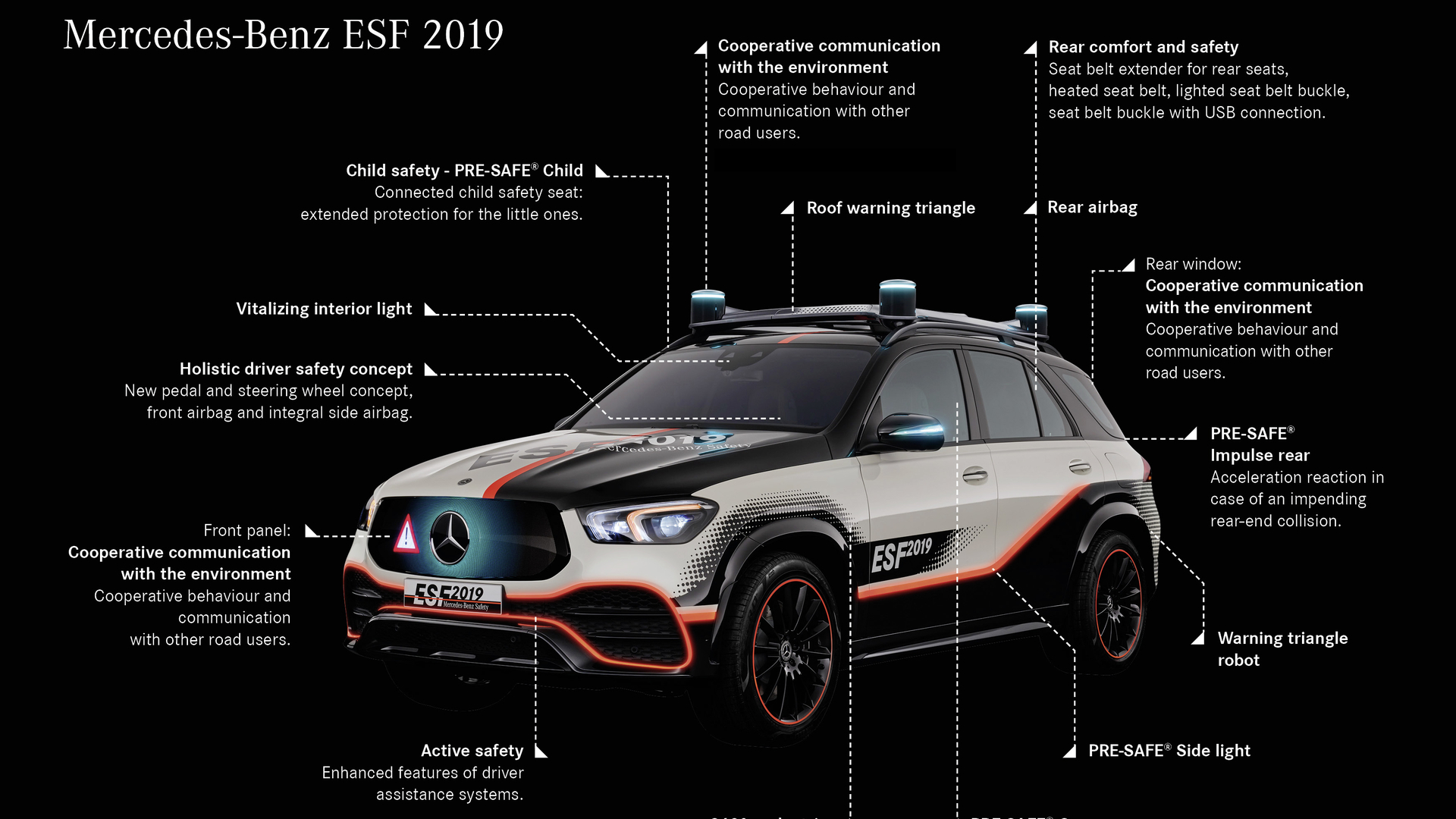

Ever since its very beginning, Mercedes-Benz has always been a purveyor of cutting-edge safety technologies. It produced the first hydraulic braking system, first independent front and rear suspension, the first safety-cell type body, the first safety door lock, the first use of crumple zones, the first to start systematic crash testing, and the first to develop a number of passive and active safety measures that are still used to this day. The German company, however, isn’t resting on those laurels as it’s introduced the ESF 2019, a tangible look at the future of Mercedes-Benz safety systems.
The debut takes place ahead of the Enhanced Safety of Vehicles conference that’s set to be held this June. Mercedes-Benz has long been a part of the conference, though recent years has seen a step back from debuting a wowing concept. This year, Mercedes-Benz will rectify that with the ESF 2019. The concept is based on the company’s brand-new GLE SUV and was selected due to its suite of automated driving systems as well as its ability to be had in a hybrid variant. Though already built to an exacting safety standard, Mercedes-Benz’s engineers retooled the GLE with a much more advanced safety suite that could trickle into passenger cars soon.
The biggest change between the GLE and the ESF 2019 is the heavily modified autonomous driving suite. As L5 autonomy is still decades away from the masses, the ESF 2019 rides the line of full and partial autonomy by a semi-autonomous system that sees the steering wheel and pedals retract to “reduce injury during a crash.” The advanced automated system also has a better human-to-car interface, including a sun visor with daylight-like light to keep the driver alert, sensors to monitor driver fatigue, communication of what the car is doing in autonomous mode, and new DIGITAL LIGHT headlights that deliver far better performance than HID, LED, and Bi-Xenon systems.
Further safety systems include a small robot to drop warning triangles when pulled over, electro-luminescent paint to better “defuse potentially hazardous situations” such as side impacts, new innovative airbags throughout the ESF 2019, visual and audio warnings in the case of potential pedestrian accidents—as well as automatic braking for those situations. Mercedes-Benz’s engineers also want more people to wear their life-saving seatbelts. To incentivize their use, Mercedes-Benz released the ESF 2019 concept with belt-feeders, belt illumination, USB belt buckles, and belt heating. Oh yeah, prepare to have your stomach and shoulders warmed.
Ahead of the ESF 2019’s debut, Ola Källenius, Member of the Daimler AG Executive Board responsible for Mercedes-Benz Cars Development and who’ll become Mercedes-Benz’s new CEO said, “Safety is part of the brand DNA of Mercedes-Benz. We have repeatedly demonstrated that we are not short of ideas in this field since the 1970s, with our Experimental Safety Vehicles. The new ESF 2019 reflects the mobility of the future and presents a wide variety of innovations which we are currently researching and developing. And I can already say this much: some of the functions are very close to series production.”